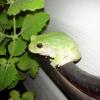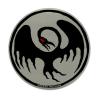I'm going to irritate most everyone here, but that's not my intent - as some really good folks have done a lot of work on this, and of course it would be great if a correlation on bigfoot activity could be connected to phases of the moon.
Here goes nothing: There is zero neutral basis to measure increase or decrease in bigfoot activity.
If this is based on sightings - you have yet another population of independent biologicals to account for. And THAT is going to be an immense task - accounting for this additional subset of data that must be accumulated and accounted for.
Here's what I'm saying. Are there more sightings on evenings with a light breeze, strong winds, or no winds. Does wind chill enter into the activity level of the observers. Is it a workday, worknight, or weekend that the observers had more observations. At the time of observation, what activities were they engaged in, and where, and under what conditions?
I mean, there may be more people out on cool evenings on weekends - regardless of the moon phase - which could skew results obtained just by examining moon phase.
If folks are up to their butts in snow and high winds, there's a greater likelihood that few observations will be made regardless of the moon phase.
Were the observations made from vehicles? What type of road - surface, width, straight or curved - had the local football team just finished and more cars were on the road? Or were conditions icy, and thus fewer cars were out and about. And THEN, what time of day for each of these incidents? Temperature and relative humidity affect the ability or preference of folks to be outside, as evidence by what we call the Heat Index.
It's just that we humans have so many variable that affect our own activities - which in turn may result in more sightings - which may or may not be affected by moon phase.
But I've been wrong something before.



